- Briefly know contributions of the Scindias starting the 18 century. It includes making Gwalior the City of Music, support to development/heritage/education and India Inc. Scindia’s men formed the irregular part of the army sent by Sardar Patel for the liberation of Hyderabad.
Compiled and Images by Sanjeev
It appears that Congress leader Rahul Gandhi is totally ignorant of royal families’ contributions to uplift their people despite foreign rule. The first article in this series was the Contribution of the Wadiyar Kings to
Mysore State. The next was on Gaekwad rulers
of Baroda. The third was on the Rulers of Mewar.
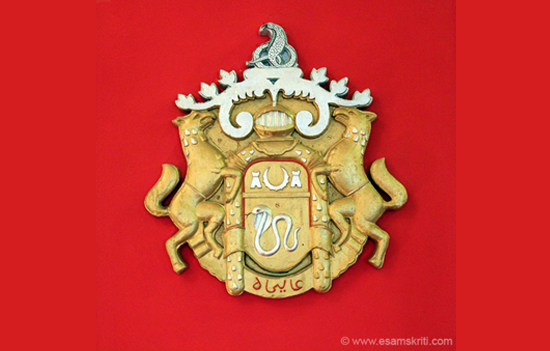 Scindia Logo dislayed at Jai Vilas Palace. Notice snake. Pic 2020.
Scindia Logo dislayed at Jai Vilas Palace. Notice snake. Pic 2020.
Brief History of Scindias
and Key Ruler Contributions
Shrimant
Daulatrao Shinde moved his capital from Ujjain to Gwalior in 1810 AD., both of which are in modern day Madhya Pradesh. “Initially known as Sendraks, they came to be called Shindes and then Scindias. They are from a small village Kanherkhed located in Satara region of Maratha Deccan.” 1
“In the days of the great Maratha Mahadji Scindia, Gwalior State stretched from Lahore suba in the north, to Ahmadnagar in the South, Bharuch in the West to the border of Prayagraj(Allahabad) in the East. Source
It was during the reign of Ranoji Rao Scindia (1731-1745) that the
Mahakaleshwar Mandir was reconstructed (destroyed by Iltutmish).
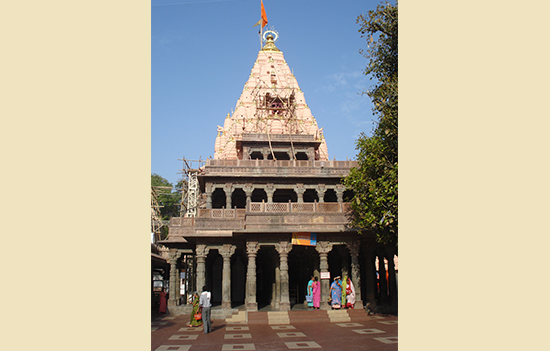 Reconstructed temple.
Reconstructed temple.
Mahadji Scindia (1768-1794)
was, in the 18th century, “the only one of the Maratha rulers who created order out of the chaos of anarchy.” “On 5 April 1770, Mahadji conquered Mathura-Vrindavan and established an animal hospital there, which was remarkable for that age.” The history of this hospital was first published in Tawareekh E Shinde Shahi.
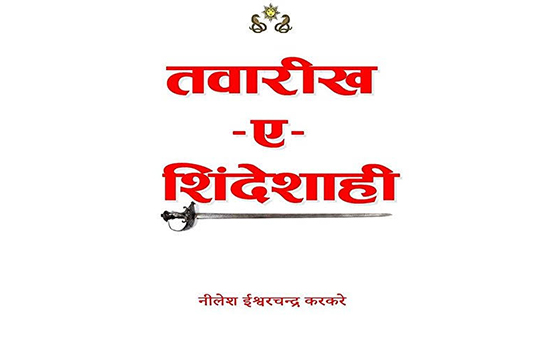 Cover Tawareekh E Shinde Shahi by Neelesh Karkare.
Cover Tawareekh E Shinde Shahi by Neelesh Karkare.
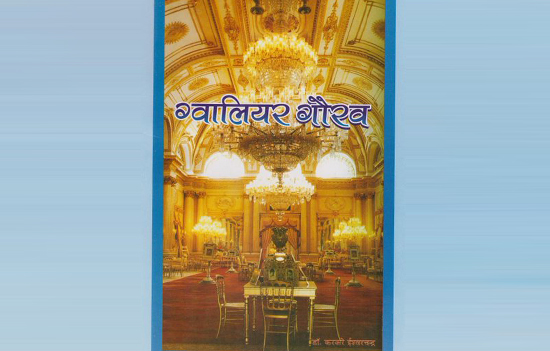 Cover Gwalior Gaurav also by Neelesh Karkare.
Cover Gwalior Gaurav also by Neelesh Karkare.
Noted historian Dr Uday S
Kulkarni wrote in esamskriti, “Post the Panipat loss it was Mahadji Scindia who took command of the entire north and his rule over huge stretches of Hindustan went on until 1803. Farman-badi - the grand darbar of Mahadji’s power held in 1792 in Pune, had by 1803 become a distant memory. A new power, the Scindias had entered the Indian hinterland.”
Neelesh Karkare, Gwalior based author of
Tawareekh
E Shinde Shahi says, “Shreenath MAHADJI Shinde Maharaj developed a strong military and civil system to save our motherland "Bharat-Mata" right up to the fort of Attock (on the banks of Sindhu river, now in Pakistan ) from continuous invasion. His hard work in this regard for more than three decades gave stability to the nation. He also abolished dacoity & thugi, and maintained the law & order.”
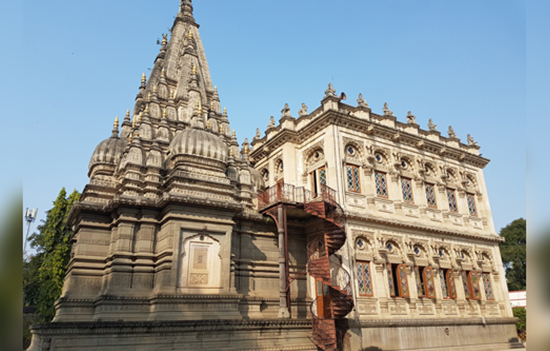 Chhatri of Mahadji Shinde at Pune. Pic by Dr Uday Kulkarni.
Chhatri of Mahadji Shinde at Pune. Pic by Dr Uday Kulkarni.
Daulatrao Scindia
(1794-1827)
Author Karkare added, “Shrimant Daulatrao Shinde transformed a military camp into a distinguished metro city of his time, today which is known as The Lashkar city. Gwalior gharana of classical music came into existence during Daulatrao 's regime.”
Jayajirao Scindia (1846-1886) “set up a judicial system with
courts and judges. In 1872, he loaned Rs 75 lakhs for the construction of the
Agra-Gwalior portion of the Great Indian Peninsular Railway. In the
following year a similar amount was advanced for the Indore-Nimach section of
the Rajputana-Malwa Railway. He also constructed many new buildings, reconstructed the Koteshwar Mandir, and donated Rs15 lakhs for the reconstruction of Gwalior Fort’s boundary wall and the broken parts of Man Mandir, Gujri Mahal and Johar Kund.”
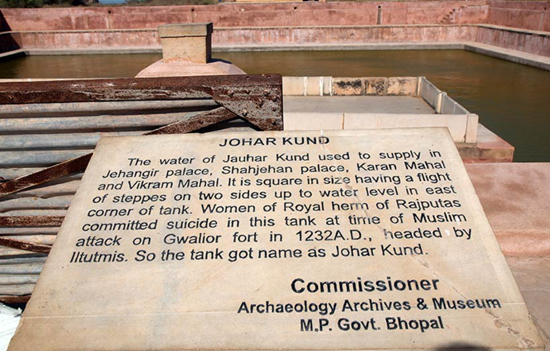 Reconstructed Johar Kund.
Reconstructed Johar Kund.
Madho Rao Scindia
(1886-1925) formed an Archaeological
Department in 1913. The decision to establish a Museum was taken in 1914. That decision contributed to the
formation of the Gujari Mahal
Museum that we see today.
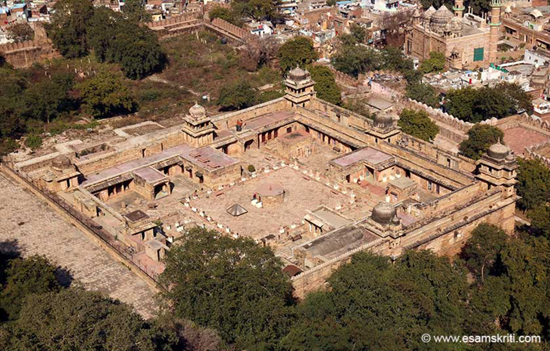 View of Museum from Gwalior Fort.
View of Museum from Gwalior Fort.
“Madho
Rao insisted that surplus funds be invested to provide income for the
progressive undertakings which he initiated. The compulsory 20-23 per cent,
saving instituted by him has made possible the funds for irrigation, education
and famine relief.” 1 Line 1 is from Gwalior
Today, edited by Michael H Brown published in 1940 by Times of India Press.
He sanctioned an outlay of Rs 2.5 crs for irrigation work. The first municipality came into being in 1887. Village level panchayats were established in 1912. A Assembly (people representatives was established in 1921). Author Karkare adds, “Various dams were built during late 19th century and early 20th century to improve the irrigation system in the state.”
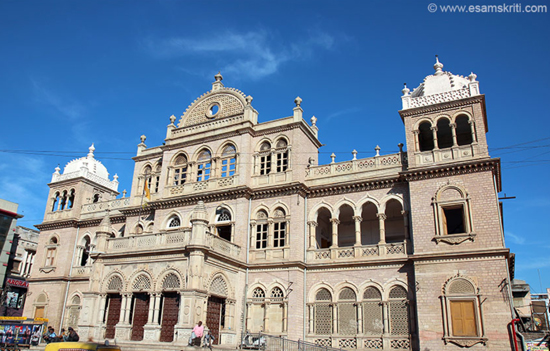
“A marked feature was the separation of Judicial from the Executive functions, which had been brought into force since 1908. There were 72 regular courts. The lowest unit of the system was a Pargana Judicial Officer's Court and the High Court of Judicature at Gwalior was the highest court of appellate and original jurisdiction.” Source
The Scindia school was founded by Madho
Rao in 1897. It was opened to the public by Jiwajirao in 1936. Wish I studied
there. To see school
album
 View of school playground from Madhav Sports Pavilion. Gurudwara is in memory of Guru Hargovind who was imprisoned in Gwalior Fort.
View of school playground from Madhav Sports Pavilion. Gurudwara is in memory of Guru Hargovind who was imprisoned in Gwalior Fort.
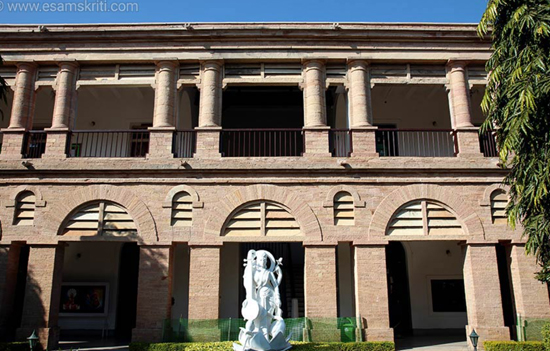 Scindia Boys School.
Scindia Boys School.
Jiwajirao Scindia (1925-1961) “was one of the first rulers to accede to the Indian Union. He contributed 50 crores to the Government of India exchequer. He undertook a number of measures to relieve the financial burdens of the farmers, established educational institutions, libraries, and hospitals for women and children.” 1
His wife, Rajmata Vijaya Raje Scindia (1919-2001)
founded Scindia Kanya Vidyala in 1956. It is a modern school. I visited in
2020. To see school
album
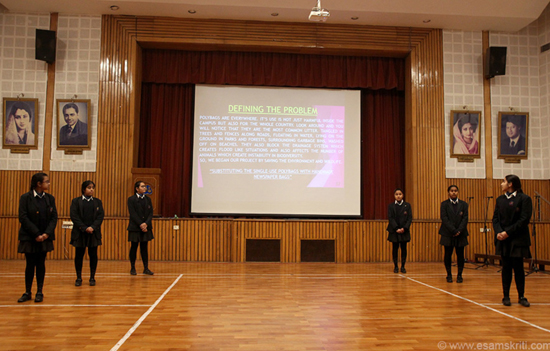 Scindia Girls School Auditorium/Assembly Hall.
Scindia Girls School Auditorium/Assembly Hall.
Jiwajirao supported music in a big way.
More on this later.
Author Karkare writes, “Shrimant Jiwajirao Scindia donated many of his ancestral palacial buildings and lands (in Madhya Pradesh and Maharashtra) for educational purposes to different educational societies.”
Some interesting facts brought out by author Karkare, “Scindia army also participated in the liberation of Hyderabad. Jiwajirao Scindia was a visionary ruler and fully supported Vallabhbhai Patel in his national endeavours. Against
Hyderabad, there were app. 1500 Maratha, Jat and Rajput soldiers from Gwalior. They
formed the irregular part of the army sent to Hyderabad by the then home
minister Sardar Patel. (1000-1200 from infantry, 200-300 from cavalry). After merging Gwalior state in the Indian Union, most of the brigades of Scindia Army were merged into newly formed Indian Army. There was no Scindia army after December 1948.”
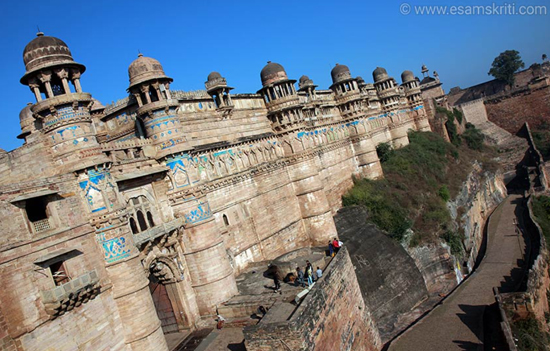 Gwalior Fort is a must visit.
Gwalior Fort is a must visit.
Support to India
Inc/Industry
Rule of Madho Rao Scindia
“A part of Madho Rao Scindia' ambitious scheme was the Board of Economic Development established in 1920 as an advisory and consulting body with regard to matters of economic and commercial interest. Three spinning and weaving mills at Ujjain and one at Gwalior were working successfully.” Source
“In order to support Swadeshi enterprise, Maharaja Madho Rao Scindia invested Rs 4,00,000 for the establishment of TATA IRON AND STEEL COMPANY to create an alternative to British industry in India. Girish Kuber in his book, The TATAS the family that built a business and a nation has mentioned about the Scindia contribution to Tata’s success.” 3
“On March 27, 1919, the Scindia Steam Navigation Company Ltd was registered with an authorised capital of Rs 4.5 crores. When Scindia Steam Navigation Company's first ship, Loyalty, set sail for the UK on April 5, 1919, an Indian flag was unfurled in international waters for the first time in modern maritime history. Appropriately, since 1964, April 5, is celebrated annually as India's National Maritime Day.” 3
Rule of Jiwaji Rao Scindia
“Maharaja Jiwaji Rao Scindia, decided to start the Gwalior and Northern India Transport (GNIT) Company for a better public transport system and bought 160 buses to provide better public transportation to North India. The General Manager of this company sat in Scindia House at Connaught Place. Scindia House was originally bought by the Maharaja as office space for his other company Scindia potteries. It was only in May 1948, the Centre took over the Scindia's GNIT and renamed it as the Delhi Transport
Service and in 1971, renamed it as the Delhi Transport Corporation (DTC).” 3
In April 1947, an agreement was entered into by the ruler and Birla Brothers for certain financial concessions for setting up a plant at Nagda. “In
1951, the Maharaja of Gwalior offered land in Nagda to set up a viscose staple fibre (VSF) plant. Grasim has been a trailblazer. It filed the world's first patent for developing pulp (raw material for manufacturing VSF) from mixed hardwood.” 3 I visited Nagda plant in 1990, impressive. Also read on the Birla
site The company GRASIM,
was incorporated in Gwalior in August 1947.
Sandip Ghose
wrote in Hindu
Business Line, “Kidwai tells us how at one time Madhavrao was the second largest shareholder in an investment company of the Bombay Dyeing family.” According to this
article in www.indialegallive.com, “At the time of Independence the Scindias owned 49% shares in Bombay Dyeing.” The nature of investment is not known, meaning financial or strategic.
Why has Gwalior has been
designated as the City of Music in the UNESCO Creative Cities Network?
Arunansh B. Goswami, Head of Scindia Research Centre wrote, "As per musician Dr. Abhay Dubey, During king Mansingh’s reign the Dhrupad style was invented in the same fashion during Scindias’ days the Khayal style emerged” (Note: As the Dhrupad style emerged during king Mansingh’s reign, the Khayal style emerged during Scindias’ days.) and as per renowned musician of Gwalior Babasaheb Poonchwale “In the nineteenth century, during the rule of four Scindia monarchs, Daulatrao, Jankojirao, Jiyajirao, and Madho Rao Khayal singing had developed completely.”
Famous musicians from all over the country started coming to
Gwalior to get patronage from Maharaja Scindia. The
MP Tourism site refers to Tansen
Shatabdi Samroh 2024 as a “tribute to the Indian Musical legend, Shri Ramtanu Misra, famously known as Tansen.” Read Tansen Music
Festival
Goswami added, “It has been mentioned by Tushar Pandit in his book Bhartiya
Sangeet ke Mahan Sangeetkar: The kings and the audience were amazed and since then a proverb came into prevalence “Gwalior
is a home of Music”. Ustad Hassu Khan’s disciples Pandit Ramakrishnabuwa Dev and Pandit Vasudeorao Joshi were appointed as court-singers by Maharaja Scindia to promote music in the Gwalior court. Baalkrushnabuwa Ichalkaranjikar, who was born in 1849 near a town of ‘Ichalkaranji’ in a small village called ‘Bedag’, learnt singing style of the Gwalior Gharana from Pandit Vasudeorao Joshi, doing great service of his Guru. It was by Baalkrushnabuwa Ichalkaranjikar that the Gwalior Gharana of Music was brought to Maharashtra.” 4
What is a
Gharana?
Briefly, “Most Hindustani musicians train under the umbrella of a
certain style, known as a gharana. The word means family, and is derived from the Urdu for ‘house’. A gharana can be named after a person or family, as in the Senia gharana (named for saint-musician Tansen), or a place, as in the Gwalior or Jaipur gharanas. The present gharana system is not so old, but became more prominent in the 18th and 19th centuries.” By Jahnavi in Darbar.org Tansen learnt music from Swami Haridas.
Maintenance
of Heritage
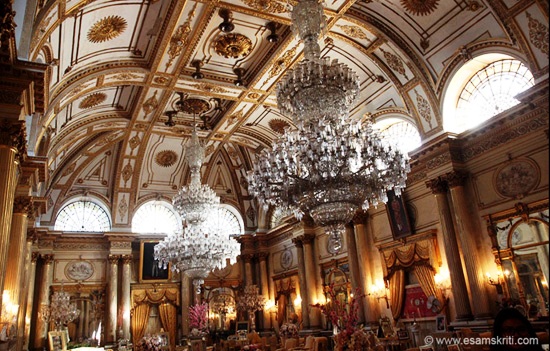 Durbar Hall, Jai Vilas Palace
Durbar Hall, Jai Vilas Palace
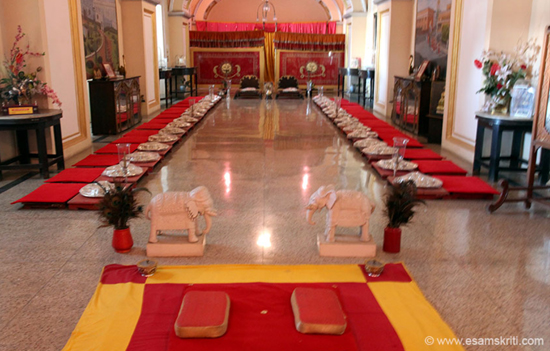 Dining Hall in Jai Vilas Palace.
Dining Hall in Jai Vilas Palace.
The Jai
Vilas Palace is very
well maintained and worth a visit. Ditto is the Gwalior Fort which is managed
by the Archaeological Survey of India now.
Looking
Ahead-What can the Scindias do?
Even though
I spent only a week in Gwalior and not actually studied the subject, here are a
few suggestions.
Gwalior has
so much to off to tourists. The entire region needs to be promoted aggressively
i.e. Gwalior, Orchha, Morena
Temples, Datia, Shivpuri, Khajuraho, Dholpur, Chambal Ravines and Chambal
River Safari.
Gwalior has
the potential to become an Educational Hub.
Thank you Rahul Gandhi for writing what you did. You goaded me into writing and publishing articles on contribution of former royals. All Gwalior Pictures are of January 2020.
Reference
1. Tawareekh E Shinde Shahi
2. Jai Vilas Palace site
3. Scindia Research Centre
4.
Head of Scindia Research Centre Arunansh Goswami wrote in ETV Bharat – Scindia and Indic Inc
5. Scindias and their city of Music by Arunansh Goswami
Also
read/see
1. Life story of
Mahadji Scindia
2. Zenith of Shinde
Shahi
3. A look at Gwalior’s music tradition – City of Music in Indian Express
4. Atmanirbhata
in Defence: The Scindia way
5. Mahadji
Scindia and military modernization in Pre-Modern India